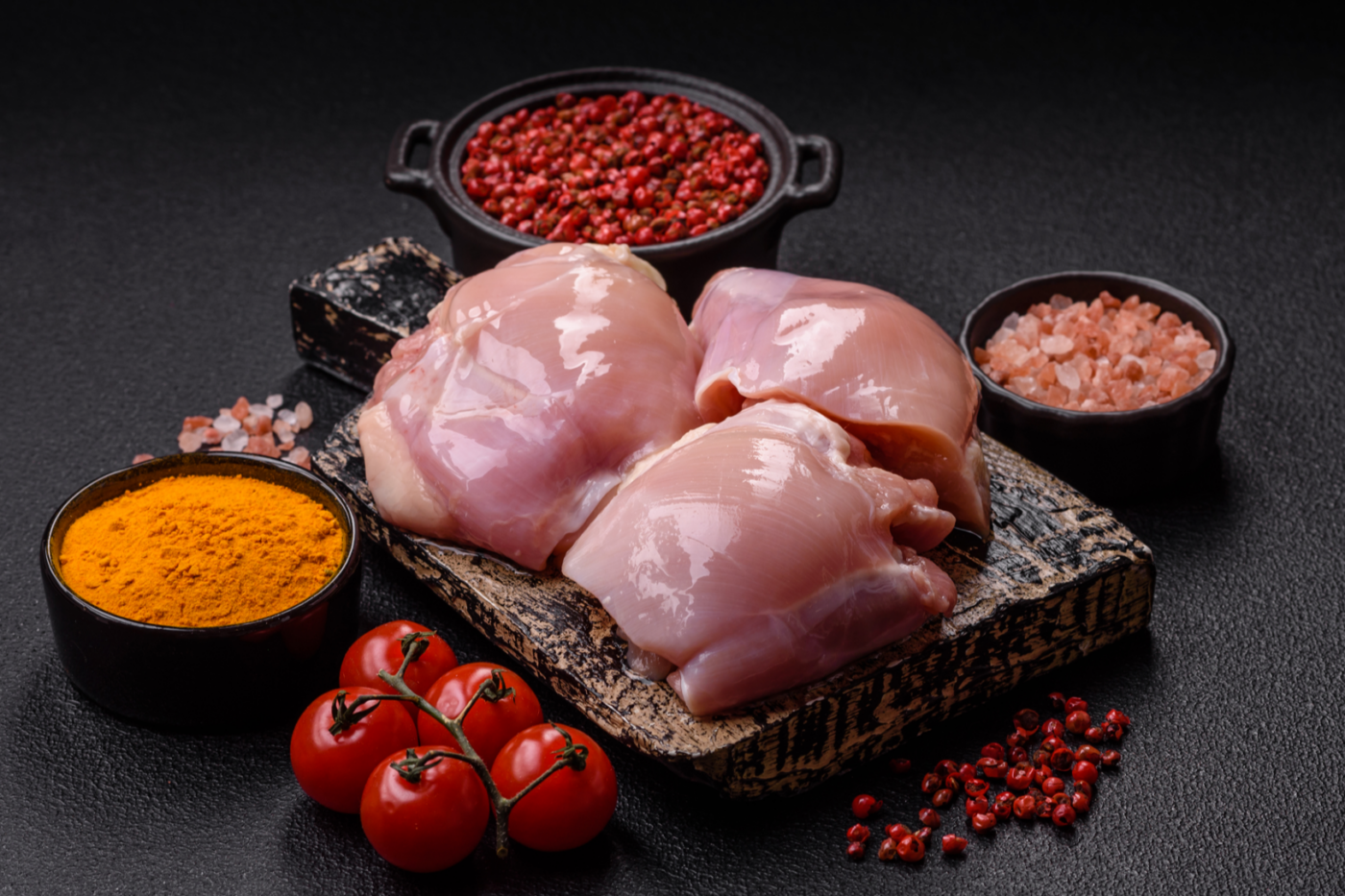The Rise of the Underdog: A Culinary History of Chicken Thighs
The chicken thigh, that often-overlooked, richly flavored cut of poultry, has a history as deep and complex as its taste. While the leaner breast may have dominated the spotlight in recent decades, the thigh’s journey through culinary history reveals a story of resilience, adaptation, and a growing appreciation for its unique qualities. This article delves into the flavorful past of the chicken thigh, exploring its role in various cultures and its evolution from a humble staple to a celebrated ingredient.
Early Days: The Whole Bird and Practicality
In the beginning, when humans first domesticated the Red Junglefowl in Southeast Asia, the concept of favoring specific cuts of meat likely didn’t exist. Early societies that raised chickens, such as those in ancient Egypt, Greece, and Rome, utilized the entire bird.
- No-Waste Cooking: A philosophy of “no waste” was paramount, and all parts of the chicken, including the thighs, were consumed.
- Roasting and Stewing: Whole chickens were typically roasted over open fires or stewed in pots. The thighs, with their higher fat content, would have remained relatively moist during these cooking methods.
- Cultural Significance: Chickens held symbolic and religious significance in many ancient cultures, and their consumption, including thighs, was likely intertwined with rituals and traditions.
Medieval Europe: A Preference for White Meat?
During the Middle Ages in Europe, a shift in culinary preferences may have begun to emerge.
- Feasts and Fowl: While whole roasted chickens were common at feasts, some historical accounts suggest that white meat, including the breast, started to be considered more desirable by the wealthy.
- Humoral Theory: The prevailing medical theory of the time, known as humoral theory, may have influenced food choices. White meat was thought to be more easily digested and therefore more suitable for those of refined constitutions.
- Thighs for the Common Folk: It’s possible that darker meat, including thighs, became more associated with peasant cuisine, although this is not definitively documented.
The Renaissance and Beyond: A Gradual Appreciation
The Renaissance and the subsequent centuries saw advancements in culinary techniques and a growing interest in exploring different flavors and textures.
- French Influence: As France emerged as a culinary leader, French chefs began to develop more sophisticated methods for preparing poultry. While the breast may have been favored for certain dishes, the thigh’s rich flavor likely found its place in stews, braises, and other preparations.
- Regional Variations: Across Europe, different culinary traditions developed, and the use of chicken thighs varied depending on local tastes and available ingredients. In many cultures they used the thigh meat for stews.
The 20th Century: The Breast’s Dominance and the Thigh’s Resilience
The 20th century witnessed a dramatic change in the way food was produced and consumed, particularly in the United States.
- Industrialization of Poultry: Factory farming made chicken more affordable and readily available. However, the focus on efficiency and standardization led to a preference for faster-growing, larger-breasted chickens.
- The Rise of the Breast: The chicken breast became the dominant cut in American cuisine, marketed as a lean, healthy, and versatile protein source.
- The Thigh’s Underdog Status: Chicken thighs, often perceived as less desirable due to their higher fat content, were relegated to a secondary role, often sold at lower prices.
- Fast Food and the Thigh: While the breast dominated many fast-food menus, some chains recognized the flavor and affordability of the thigh, incorporating it into their offerings.
Global Perspectives: Thighs as a Culinary Staple
While the chicken breast reigned supreme in some parts of the world, the thigh remained a beloved cut in many global cuisines.
- Asian Cuisine: In many Asian cultures, dark meat, including thighs, is preferred for its richer flavor and ability to withstand longer cooking times. From Japanese yakitori to Thai curries, chicken thighs are a staple ingredient.
- Mediterranean and Middle Eastern: In Mediterranean and Middle Eastern cuisines, chicken thighs are often used in flavorful stews, tagines, and kebabs, where their ability to absorb spices and remain moist is highly valued.
- African Cuisine: Across Africa, chicken thighs are a common ingredient in a wide variety of dishes, from flavorful stews to grilled preparations.
The 21st Century: The Thigh’s Comeback
In recent years, the chicken thigh has experienced a remarkable resurgence in popularity, particularly in Western cuisine.
- Chef-Driven Appreciation: Chefs and food writers have championed the thigh’s superior flavor and versatility, introducing it to a wider audience.
- Focus on Flavor: A growing emphasis on flavor and a willingness to embrace ingredients that were once considered less desirable have contributed to the thigh’s comeback.
- Healthier Perceptions: While higher in fat than the breast, the fat in chicken thighs is primarily unsaturated, and the thigh itself is packed with nutrients like iron and zinc. Many now recognize that moderate fat consumption is part of a healthy diet.
- Sustainability: A growing movement towards “nose-to-tail” eating, which emphasizes using all parts of the animal, has also helped to elevate the thigh’s status.
Conclusion
The culinary history of the chicken thigh is a story of resilience, adaptation, and a growing appreciation for its unique qualities. From its early days as an integral part of whole-bird cookery to its current status as a chef-favorite and a globally beloved ingredient, the thigh has weathered changing culinary trends and emerged as a true culinary champion. Its rich flavor, affordability, and versatility have secured its place not just on our plates, but in the cultural and culinary landscape worldwide. As we move forward, the chicken thigh’s story is far from over, promising new chapters of flavor and innovation in kitchens around the globe. It’s a delicious reminder that sometimes, the most flavorful and satisfying ingredients are the ones that have been there all along, waiting to be rediscovered and celebrated.


Share
Click on the icons below to share "Title of the item to share"